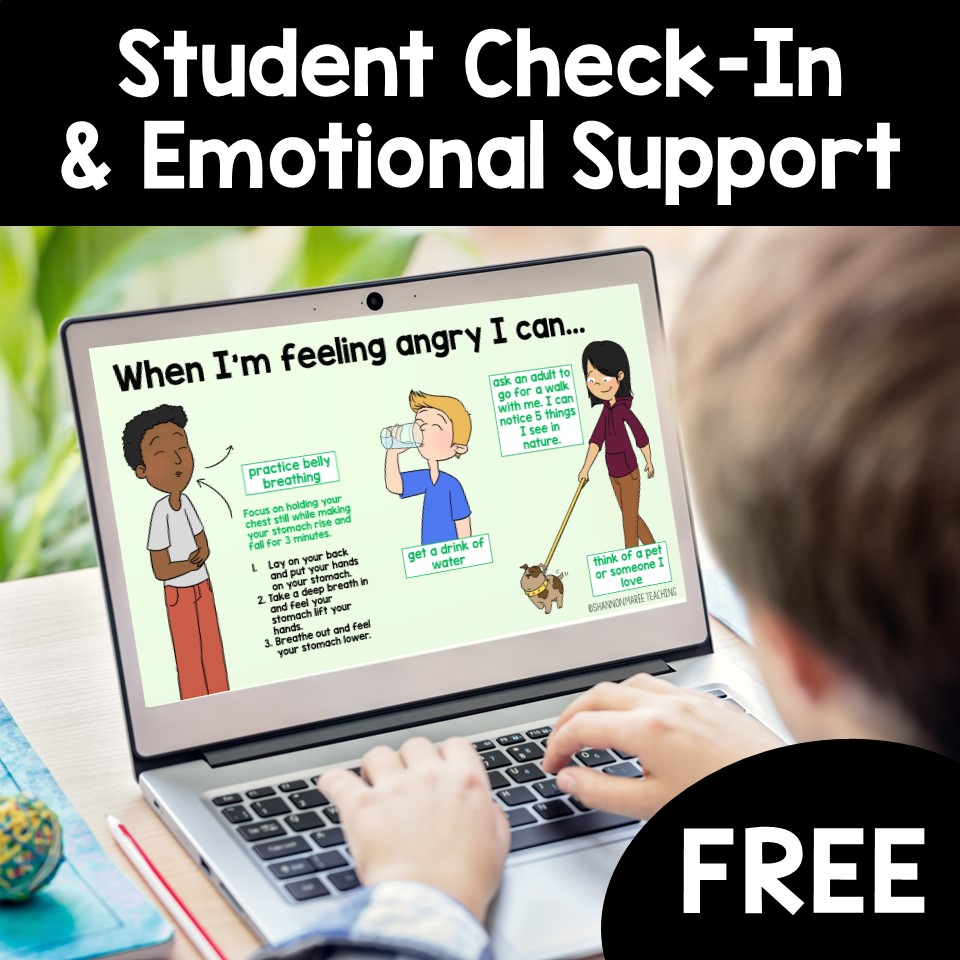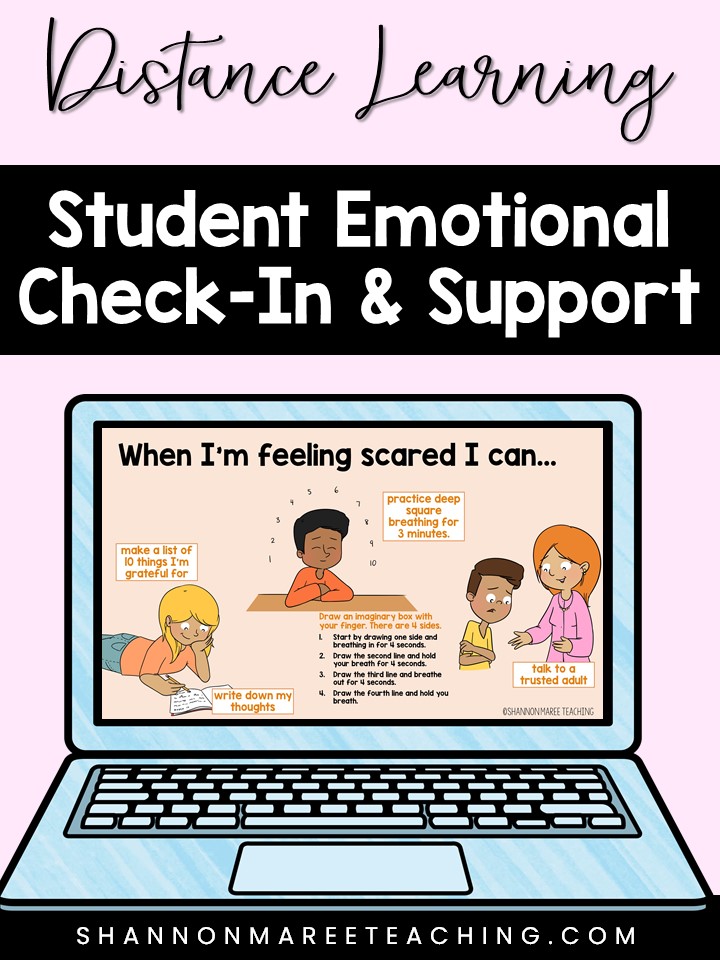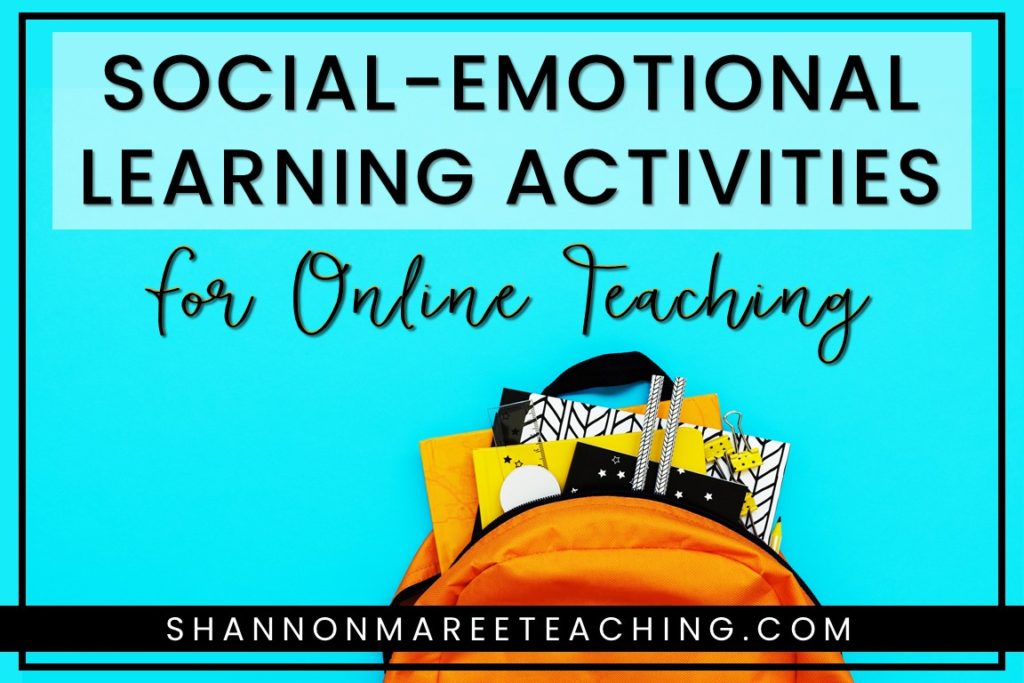
Here are 5 simple social-emotional learning activities for online teaching that your students will love! In this overwhelming, uncertain time our students need social-emotional support more than ever. These ideas are low-prep for us as teachers but powerful activities for our kids.
1. Games for Social-Emotional Learning
In upper elementary, this isn’t as much of an intuitive response as it is in the younger grades….but it’s just as important! Games help with communication, patience, problem-solving, self-management, and build student relationships.
Here are some no-prep quick and easy games you can play via distance learning. They are great for morning meetings, warm-ups, or brain breaks.
- Scavenger hunt: Have a shortlist of items for students to find around the house. Read items one at a time. The student who can return with the item the fastest wins that round. Ideas: something fuzzy or furry, something with a battery, 2 coins, sunglasses, a book, something you wear on your feet, something that’s square, two items that are opposite, etc.
- 4 Corners: Students raise hands to show they’re ready. The teacher selects a student to be “it.” That student closes their eyes and counts to 5. Students then hold up a number on their fingers (1-4). The student who is “it” picks a number 1-4, anyone holding up that number is out and puts their hand down.
- Charades/Pictionary: Random fun words or content/vocab based
- Guess Who (kids submit fun facts about themselves, then people guess who it is)
- Comedy Hour: Everyone who wants can bring a joke to share
- Quizzlet live or Kahoot: Academic or SEL basd options: here’s an example of an emotions Kahoot game you could play: https://create.kahoot.it/details/feelings-and-emotions-scenarios/1bfa1f37-ee62-492a-868f-e3c402bc7cab )
- Directed Drawings: There are tons of options here is one my students have enjoyed (I show them through share screen) then they hold up their finished drawings at the end. https://www.youtube.com/user/ArtforKidsHub
- Rock, Paper, Scissors Class Vs Teacher: Everyone plays, anyone who beats the teacher stays in for the round, anyone who the teacher beats puts their hands down, continue until there is a winner!
- Show and Tell: Let students know ahead of time and they can bring something to share with the class
- Student Teacher: Students take turns sharing a quick “how-to” with the class: how to make bubbles, make play-doh, an easy recipe, a paper airplane, etc.
- Invite a guest: Guest yoga instructor, magician, another teacher they may have had in the past or an admin to do the read-aloud
- Use emojis in the chat to guess a vocabulary word, book/movie title, character, phrase or saying, etc. Or pose a situation and ask students to share how they’d feel or respond in that situation by using emojis.
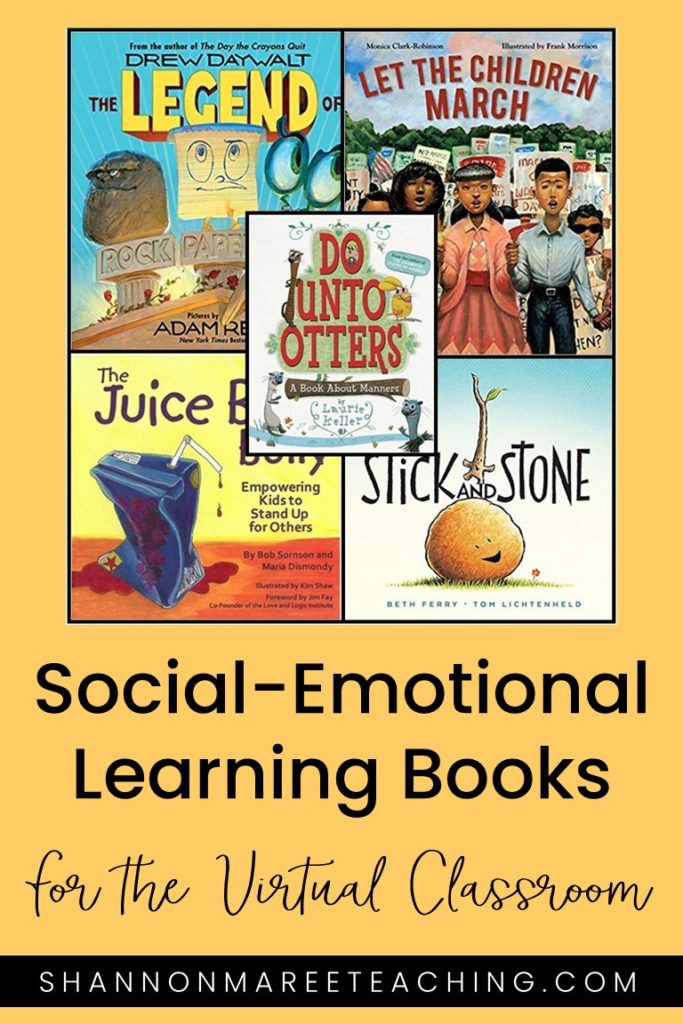
2. Social-Emotional Read Alouds
Read alouds are a great way to teach social-emotional skills and bring normalcy to our students’ lives. Read alouds teach social-emotional skills by building empathy, providing discussions on perspective, problem-solving, and decision making. They also model and encourage appreciating diversity.
You can check out some of my favorite chapter book SEL read alouds here: https://shannonmareeteaching.com/read-alouds-for-the-social-emotional-learning-classroom/
and some great social-emotional picture book read alouds here: https://shannonmareeteaching.com/classroom-community-for-upper-elementary/
Social-emotional learning activities for online teaching can be quick, simple, and impactful.
3. Daily/Frequent Student Check-Ins
Our students, like the rest of us, are facing uncertain times. They are coping with major changes, potentially sick family members or friends, and the emotional rollercoaster and stress that come with a world crisis. Checking in our students can look a variety of ways. Check-ins are great for assessing the overall well-being of your students. Here are some of my favorites:
- Non-verbal: Students can show you with an action how they’re feeling, you can also offer numbers (1-5 assigning each a different meaning) and ask students to show you with their hands
- Ask students to describe if they were the weather, what they’d be today
- Google Forms: Always available for students to use, quick and easy, students don’t need an account, information is neatly organized for the teacher
- Ask students to drop an emoji in the comments that represents how they’re feeling
- Color check-in: Assign different meanings to different colors and have students hold up something that color
You can grab a free of the Google Forms Student Check-In I’m using by clicking here.
4. Mindful Breathing
Coping strategies, like mindful breathing, are a great way to support students. Students can use mindful breathing anywhere anytime. Social-emotional learning activities for online teaching like mindful breathing can be used by students outside of class or as a whole group to start a lesson, take a brain break, or end class.
- Belly Breathing: Focus on holding your chest still while making your stomach rise and fall for 3 minutes. Lay on your back and put your hands on your stomach. Feel your stomach lift and lower while taking deep breaths.
- Deep Square Breathing: Start by drawing one side of the square and breathe in for 4 seconds. Draw the second line of the square and hold your breath for 4 seconds. As you draw the third line breathe out for 4 seconds. Complete the square by drawing the fourth line and holding your breath for 4 seconds. Repeat as many times as you want.
- Bubble Breathing: Take a deep breath in. Exhale slowly trying to blow the biggest bubble you can without exhaling too quickly and popping it.
- Shoulder Roll Breathing: Slowly begin to lift and roll your shoulders backward. As you roll them breathe in and out. When you’re ready, switch directions of the shoulder roll. Continue to breathe in through your nose and out through your mouth slowly.
- Hand Tracing Breathing: Students put one hand out in front of themselves and use a finger on the other hand to trace. As they trace up the finger they take a deep breath in through their nose, and as they trace down the finger they slowly let the air out of their mouth.
Want your students to have other coping strategies? Grab the free emotional check-in and paired coping strategies Google Slides resource here.
5. Practice Gratitude
Focusing on the positive and showing gratitude has scientifically proven to improve physical and emotional health. Here are some quick gratitude prompts you can do with your students.
- What are 3 things you’re thankful for today?
- What are 5 positive things about yourself?
- Who are 3 people you’re thankful for today?
- Who are 3 people you can reach out to with encouragement or a message of gratitude today?
- What’s a place that your grateful for?
- What’s something you’re grateful to have today that you didn’t have a few years ago?
- What artist, musician, author, performer, or athlete are you grateful for?
- What book are you grateful for?
- What’s something outside that brings you joy?
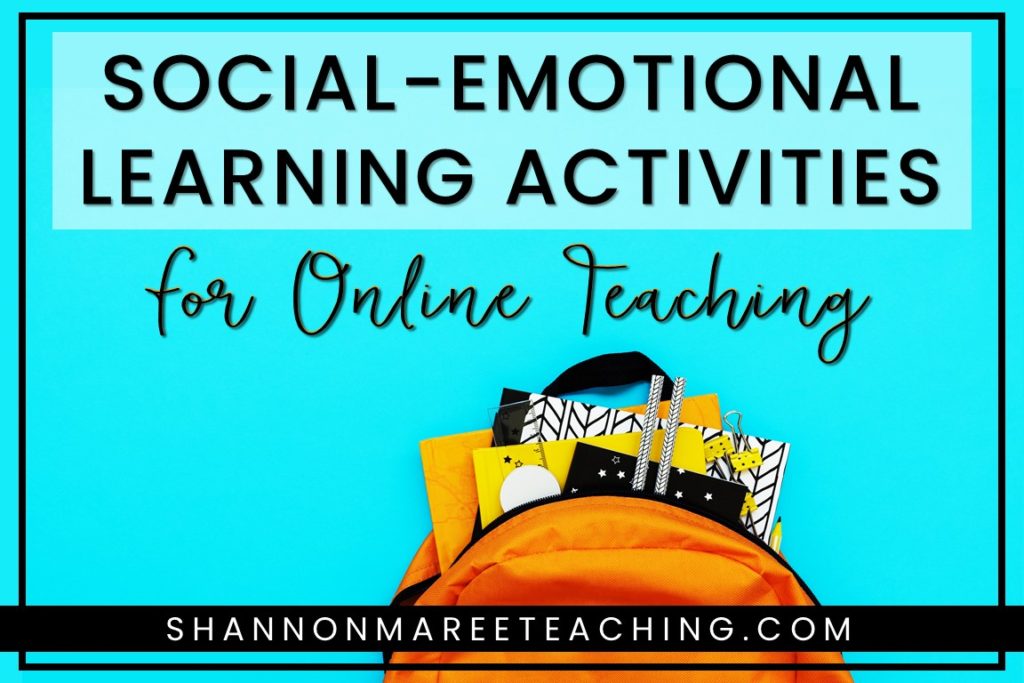
Here are some great teacher posts to check out regarding distance learning:
-Distance Learning: What is Happening?
-Online Learning Resources and Activities
-Boost Classroom Community During Digital Learning
-How to Map Out Your E-Learning Lesson Plans
-Mindfulness in the Classroom
Social-Emotional Learning Activities
What are your favorite ways to incorporate social-emotional learning into your virtual classroom? Drop a comment below, I’d love to hear.
